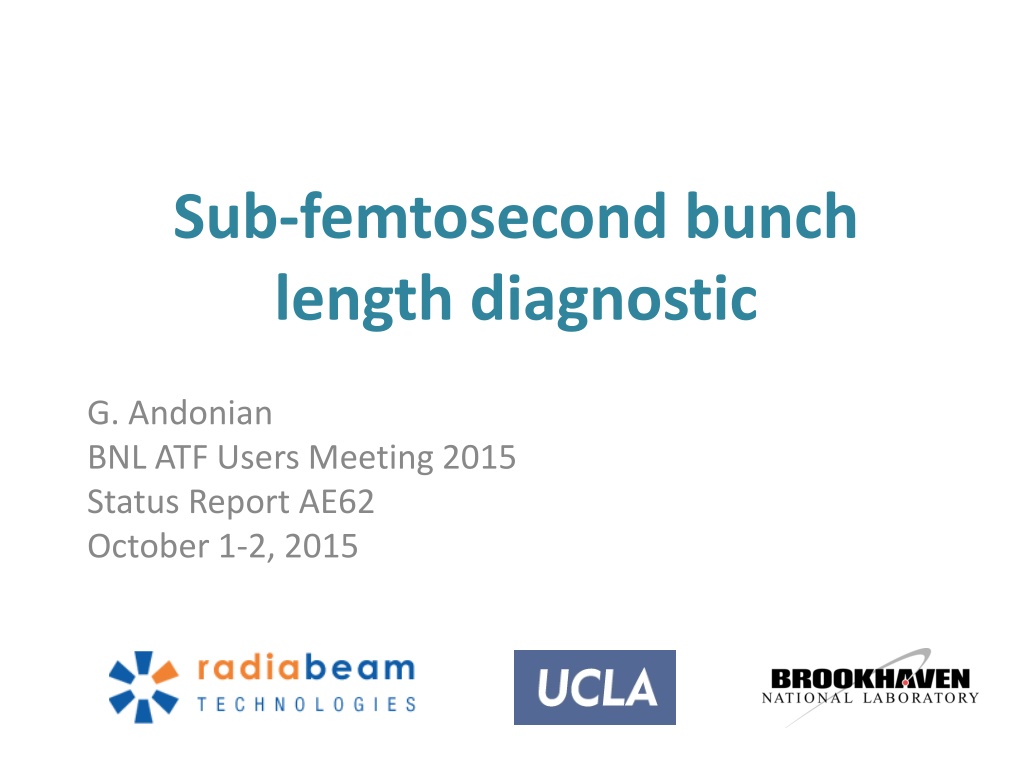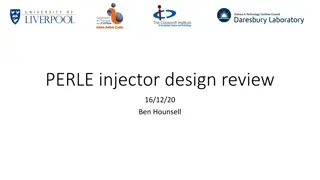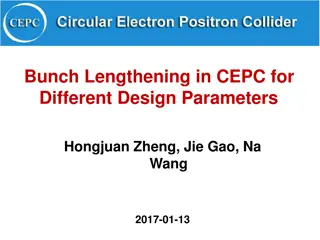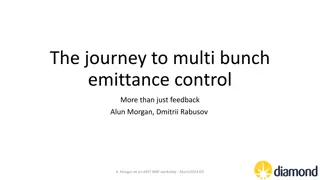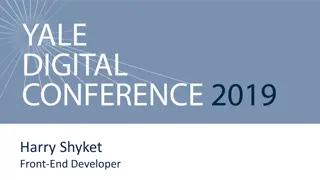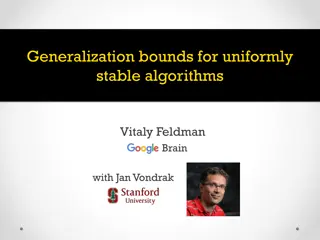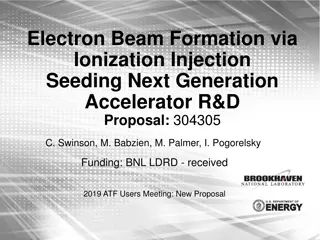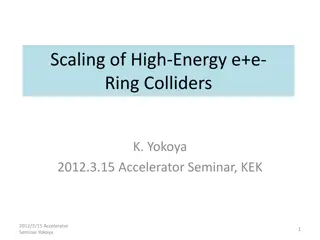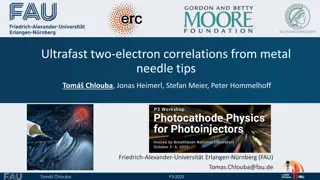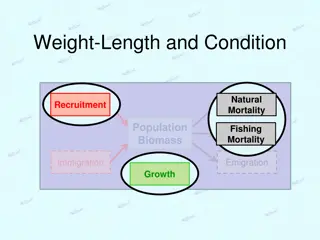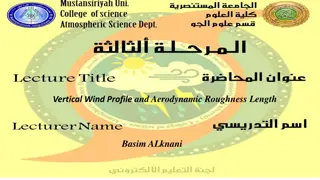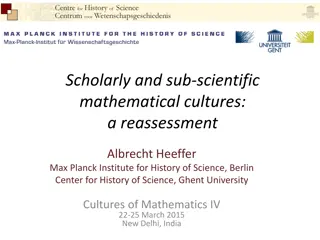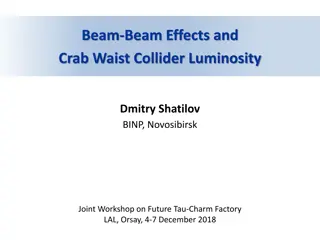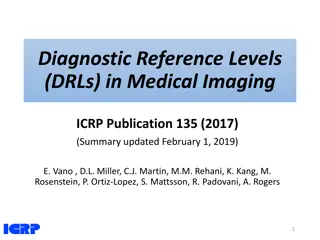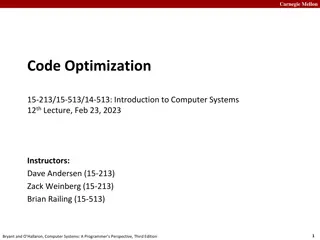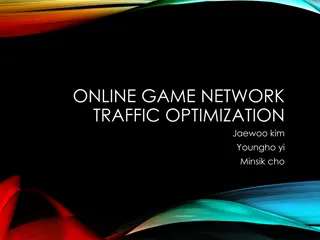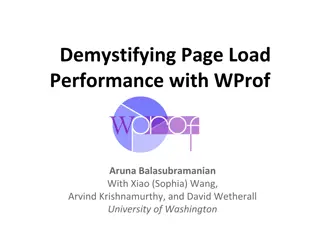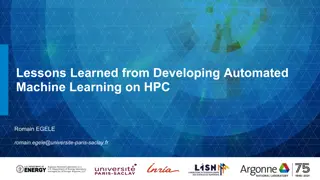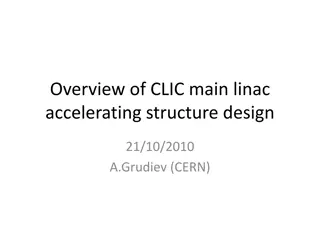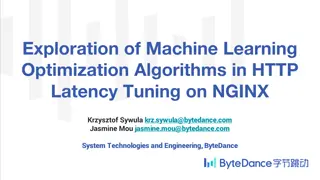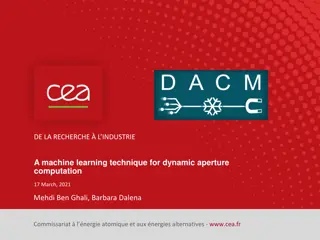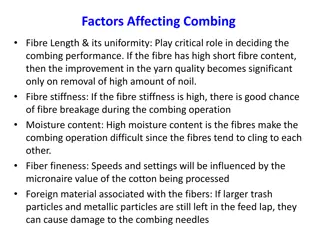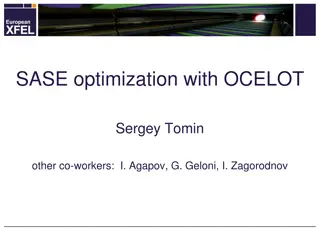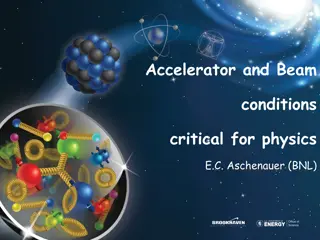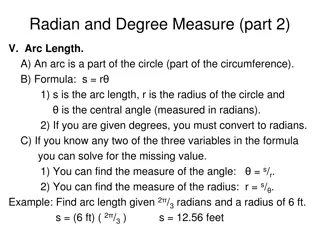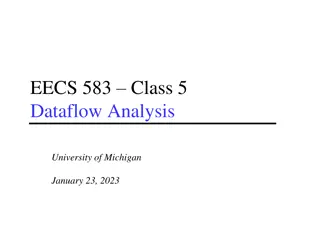Sub-femtosecond Bunch Length Diagnostic and Machine Performance Optimization
Characterizing bunch profiles of sub-ps pulses for machine performance optimization and understanding beam variations in emittance. Current bunch length measurement techniques are limited to a few fs, prompting the need for femtosecond resolution. Techniques like Coherent Radiation Interferometry and Electro-Optical Sampling are used to study properties relevant to ultra-short pulses and microbunching instability. Attoscopes and schemes enhancing resolution over RF deflectors are explored. Attoscope offers optical scale longitudinal diagnostics using a higher-order mode coupled to transverse RF deflecting mode. Experimental observations of beam modulation at laser wavelength scale and enhanced resolution capabilities through Attoscope are highlighted.
Download Presentation

Please find below an Image/Link to download the presentation.
The content on the website is provided AS IS for your information and personal use only. It may not be sold, licensed, or shared on other websites without obtaining consent from the author. Download presentation by click this link. If you encounter any issues during the download, it is possible that the publisher has removed the file from their server.
E N D
Presentation Transcript
Sub-femtosecond bunch length diagnostic G. Andonian BNL ATF Users Meeting 2015 Status Report AE62 October 1-2, 2015
Motivation Characterize bunch profile of sub-ps pulses Machine performance optimization Understand beam variations in emittance, current Bunch length measurement techniques currently limited to ~few fs Coherent radiation interferometry (ATF experience) Electro-Optical sampling RF Deflector Femtosecond resolution required for investigation on ultra short pulses Microbunching instability of COTR Single-spike SASE FEL beam Properties of attosecond x-ray production Temporal properties of echo-enabled FELs
Schematic Description e-beam deflector laser undulator screen Laser (TEM10mode)/e-beam interaction in planar undulator Angular modulation of beam Dependent on longitudinal bunch coordinate RF deflector provides vertical streak to observe modulation for long bunches Angular modulation ( sweep ) observable on distant screen (x -> x) Resolvable with standard optics Scheme provides enhanced resolution over RF deflector alone. Attoscope
Attoscope: optical scale longitudinal diagnostic Sub-fs diagnostic uses a higher-order mode IFEL interaction coupled to a transverse RF deflecting mode. TEM10 TEM10 mode Energy modulation Panofsky-Wenzel theorem Angular modulation Andonian, et al. PRSTAB 14, 072802 (2011)
Illustrative example Echo enabled FEL at SLAC D.Xiang, et al. PRL 105, 114801 (2010) Beam modulation at laser wavelength scale (~3fs) Experiment observation by indirect methods Limit on resolution of TCAV (<10fs) Attoscope provides enhanced resolution ~100as Phase Space - With laser modulation deflector only Attoscope (deflector + laser mod) Simulations with Elegant
AE62 experiment @ BNL ATF (Current Project) ATF has long history w/ CO2 laser e- beam interactions (IFEL, ICS) Simulations performed with Elegant Parameters (simulation) E= 44 MeV, Q= 500pC, n = 1mm-mrad u=4cm, N= 10, B0= 0.67T = 10.6 um, PL = 300GW Vd = 10MV, Ld = 46cm TEM10 laser mode Simple Michelson style interferometer Undulator Designed/built at Radiabeam Deflector AE37 experiment Angular modulation (top) and beam distribution at screen (bottom)
Undulator N=10, B0=0.67T, L=40cm Complete design, engineering, fabrication, validation at RadiaBeam Hall probe scan Pulse wire scan Undulator final tuning at ATF CAD model with alignment Pole fabrication F. O shea Field map Installed on BL2
Laser Mode Converter TEM10 mode w0= 1.1mm = 10.3 m RadiaBeam Bench ATF Expt Hall I. Pogorelsky M. Polyanski A. Ovodenko pyrocam
AE62 Timeline Overview Experimental stages 0. Feasibility (August 2014 #AF62) Testing optics, undulator, transport, etc. 1. Test for interaction (February 2015 - #AE62) no deflector Observable is increase in beam angular modulation 2. Full attoscope with deflector (coming soon) Beamline 2 layout for February 2015 Run Attoscope Undulator IPOP2 IPOP3 IPOP6 ID1 laser Ge Wafer IQ1 IQ2 IQ3 IQ4 e-beam
Results from run Approximate TEM10 mode with two TEM00 modes at a small angle & out of phase e-beam transverse profile monitor (IPOP6) Laser at focus Laser off (380 m rms) Laser on (500 m rms) ~1 mm Preliminary results: Effect of TEM10 laser evident even at low energy (~100mJ) Spreading in horizontal (~25%) Butterfly shape also seen in simulations Prelim analysis Next steps x-band deflecting cavity ! Prebuncher + chicane x (pixels)
AE62 Summary Promising results from February run Observed angular modulation of beam in interaction Analysis with full simulations ongoing Benefit from Rubicon experience immediately prior Synchronization, alignment, etc. Next run(s) Request: 2-3 weeks Reestablish laser conditions Realign/retune undulator Deflecting cavity commissioning (not included) Acknowledgements: M. Harrison, A. Murokh, F. O Shea, A. Ovodenko (RadiaBeam) J. Duris, P. Musumeci, J. Rosenzweig, Y. Sakai (UCLA) M. Babzien, M. Fedurin, K. Kusche, R. Malone, I. Pogorelsky, M. Polyanski, C. Swinson (BNL ATF) Support from DOE SBIR Award # DE-SC0007701
BL2 scheme Attoscope Undulator IPOP2 IPOP3 IPOP6 ID1 laser Ge Wafer IQ1 IQ2 IQ3 IQ4 e-beam
Experiment Use TEM00 mode first Synchronize laser/e-beam (Ge wafer) Observe e-beam energy spectrometer (IFEL interaction) Vary e-beam energy Vary laser power (1GW-10GW-100GW) Observe profile on IPOP4 or IPOP5 THEN Use TEM10 mode Observe beam profile downstream Look for increase in e-beam horizontal divergence Vary timing Vary laser power (500MW- 1GW-10GW-100GW(?))
Old simulations Only TEM10 mode v. laser power (no deflector) Does not include effects of transport 1 GW 10 GW 100 GW
